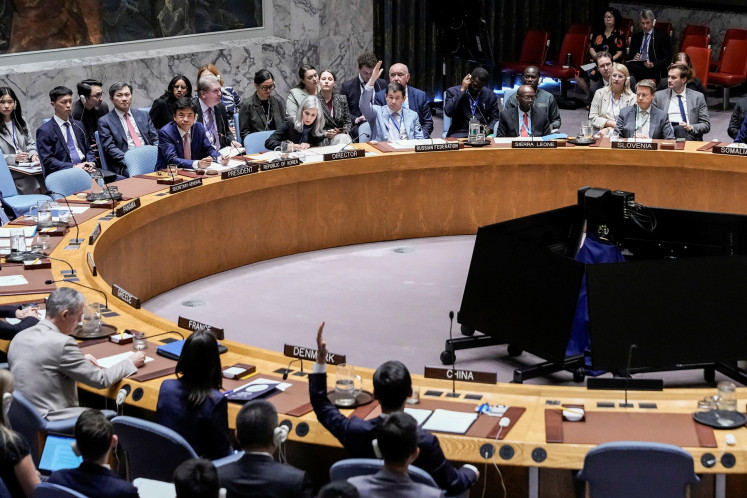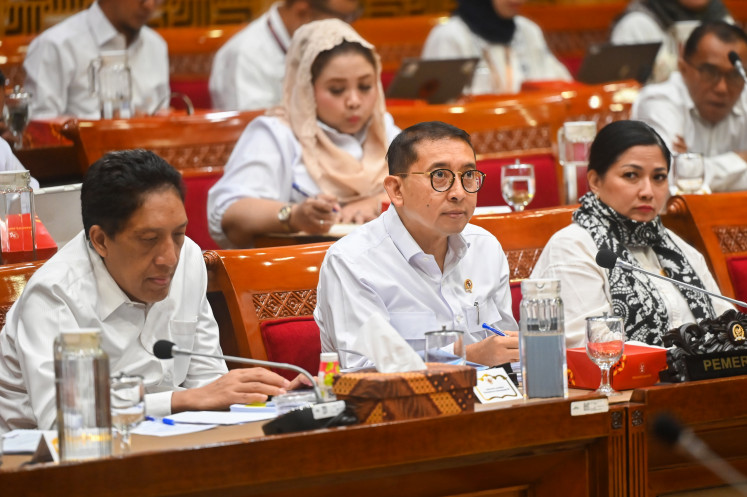Popular Reads
Top Results
Can't find what you're looking for?
View all search resultsPopular Reads
Top Results
Can't find what you're looking for?
View all search resultsInsight: The Foja Mountains – the wonder of new species discovered
The Foja Mountains in western (Indonesian) New Guinea form the northern rim of the vast Mamberamo Basin, which at almost 8 million hectares, represents the largest undeveloped rainforest block in the Asia-Pacific region
Change text size
Gift Premium Articles
to Anyone
T
he Foja Mountains in western (Indonesian) New Guinea form the northern rim of the vast Mamberamo Basin, which at almost 8 million hectares, represents the largest undeveloped rainforest block in the Asia-Pacific region.
The Foja Mountains are interesting because of their isolation; and because they represent the last significant mountain range on the island of New Guinea to be biologically surveyed.
Conservation International developed a plan to survey the Foja Mountains in the 1990s, but it took more than a decade for conditions to align that would allow this difficult expeditionary work to proceed.
Survey work there is difficult for several reasons, but most notably because it is very time-consuming to engage with local communities — who are the local landowners of the mountain range – and it was essential to gain their blessings for the survey. Secondly, these mountains are physically isolated, making access on foot impossible. To get into the interior highlands above 1000 meters requires a helicopter, which is very difficult to obtain in the region.
Scientifically, the Foja Mountains are of interest because of their isolation from other mountain regions.
They are a part of the northern coastal ranges of New Guinea, each of which is like an island of upland habitat surrounded by hot lowland rainforest. The larger of the “islands” of mountain forest — such as the Fojas — act like species generators in the isolated stable and humid equatorial climes to evolve differently from their nearest relatives on other mountain ranges. The Foja Mountains themselves have generated hundreds of local endemic species — some that are not found anywhere else on earth.
Another reason the Foja Mountains are of interest is the range constitutes about 300,000 hectares (740,000 acres) of completely undisturbed upland rainforest. This beautiful area of forest generates a huge array of ecosystem services for Papua — a great deal of fresh water, medicine, food, and fiber for the local communities that live at the foot of the range. Even more striking is that the mountain range is uninhabited and the local landowners only visit the verges of this block of forest — it is perhaps the least disturbed and most pristine tropical forest block on earth.
The Foja Mountains, and the adjacent Mamberamo Basin, represent huge conservation and natural resource wealth that needs stewardship — not only by the local landowners, but also by the provincial and national authorities. Conserving the Fojas and surrounding jungle will protect large amounts of standing carbon, wonderful freshwater systems and incredible natural diversity. CI have visited the Foja Mountains four times over the last decade and each time we have come back with interesting new species (overall a list of more than 100 new plants and animals by this point). It just shows how much there is, how difficult it is to completely assess, and how much work still remains in documenting the earth’s biodiversity.
The Foja Mountains story is partly about the wonder of discovering new species, but it is also very much a story of partnership and collaboration. The expedition could never have occurred if our Conservation International (CI) team in Papua had not first established a strong working relationship with the local Kwerba and Papasena peoples — the indigenous landowners of these mountains. This took several years of engagement and collaboration.
That CI-Indonesia Papua team helped the local people map their resources and design local conservation zoning for these lands. In addition, our CI-Indonesia Papua team worked closely with the Papua provincial authorities to make certain they were fully engaged with our research and conservation activities in the Mamberamo region. At the same time our CI-Indonesia Jakarta team has been working for many years with the Indonesian Institute of Sciences (LIPI). That long-term partnership allowed us to field strong expedition teams that combined the best Indonesian and international scientists. Today, the Governor of Papua, the Honorable Barnabas Suebu, as a result, can see that this sort of exploratory biodiversity work is an important contribution to Papua’s knowledge-base for the environment.
As the Governor moves ahead with a green development plan for Papua, and gets support for this vision from the national government in Jakarta as well as international development agencies, he can use examples like this Foja expedition story to inspire and lead a future green economy.
In October, the world will turn its attention to the Convention of Biological Diversity (CBD) in Nagoya, Japan, and the lessons learned in Foja can provide an important case study for other countries
looking to achieve the critical conservation targets being set for the next decade. When US President Obama visits Indonesia in June, we assume one of his points of discussion will be the environment and Indonesia’s forests as important carbon storehouses. The conservation of the Foja Mountains and
its surrounding ecosystems can help with this and other important environmental threats and can protect the lives of indigenous forest people who every day use the renewable resources that the Foja mountain range produces; resources that all humankind depend on for a healthy life.
Simply put, people need nature to thrive. Water, after all, does not come from a bottle, but from a clean-forested catchment or watershed — something we depend upon in densely populated Java, as well as in the heavily forested Papua.
Jatna Supriatna is the Vice President of Conservation International — Indonesia and a senior lecturer at Graduate School of Conservation Biology, University of Indonesia. Bruce Beehler, Ornithologist and tropical ecologist, is a senior research scientist at Conservation International and has specialized in birds and rainforests of New Guinea and South and Southeast Asia.










